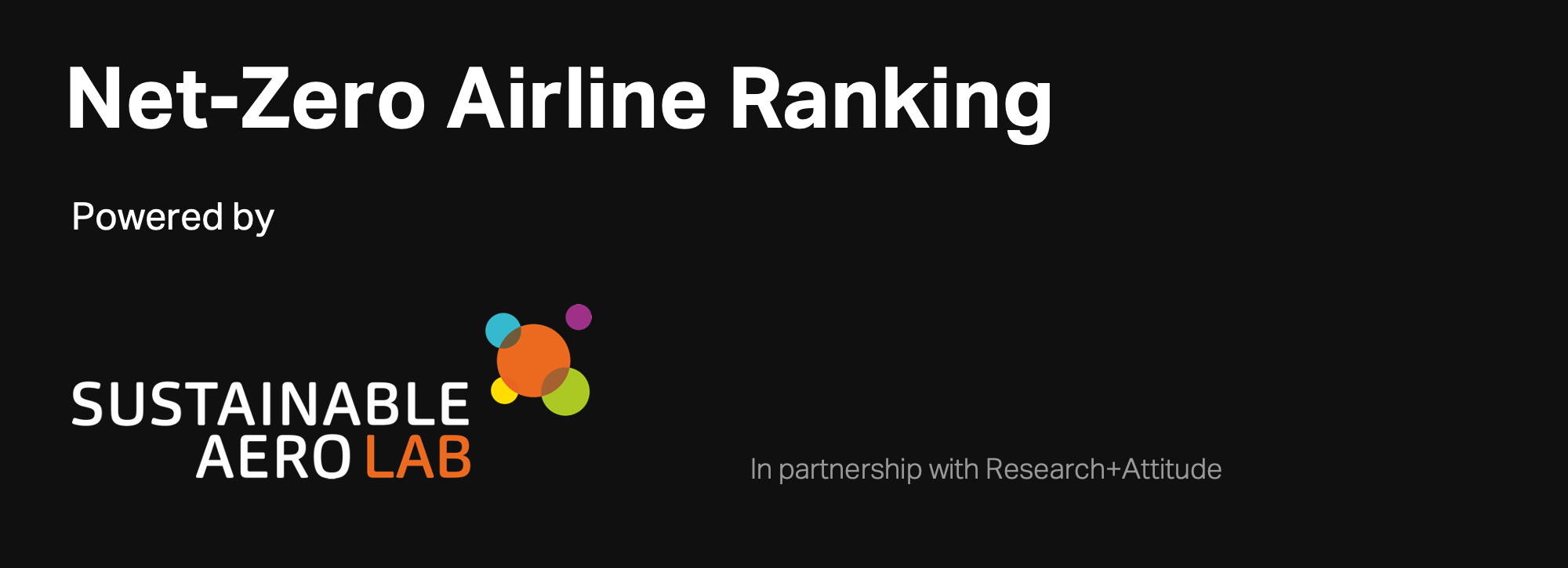The Net-Zero Airline Ranking
The Net-Zero Airline Ranking is an online assessment tool and platform that evaluates the readiness and commitment of the world's 20 largest airlines to fulfill their net-zero emission promises.
This ranking provides quarterly snapshots of airlines' progress toward net zero by scoring their sustainability actions—rather than their words—against each other.
Our approach is pragmatic.
- Through transparency, we aim to bridge the gap between net-zero rhetoric and real action.
- By highlighting true commitment—or the lack thereof—we strive to create a sense of urgency and drive the industry toward genuine, tangible change.
For more details on the individual metrics of the Net-Zero Airline Ranking, please explore our methodology.
Who We Are
The Net-Zero Airline Ranking has been created by the Sustainable Aero Lab (in partnership with Research+Attitude).

The Sustainable Aero Lab is the world’s leading mentoring program for sustainable aviation startups committed to challenging the status quo of the airline industry. To date, the Sustainable Aero Lab has mentored close to 100 startups dedicated to driving substantial change in the aviation sector, powered by a high-quality network of tech and aviation experts worldwide.
Research+Attitude is a premier market intelligence and thought leadership specialist covering a range of tech markets, specifically within the travel and mobility industries. Research+Attitude helps business leaders uncover hidden market insights and transform this intelligence into world-class thought leadership content, including online platforms, reports, articles, and comprehensive newsletter series.
Why We Created the Net-Zero Airline Ranking
Achieving net zero in aviation is not easy—it’s quite the opposite. Aviation is largely regarded as one of the hardest sectors to decarbonize. Radical innovation, which is inherently expensive, will be needed to unlock a credible path towards net zero.
Aviation stakeholders, especially airlines, will not invest in such innovation unless we create the right incentives. Transparency and airline-to-airline comparisons on sustainability commitments can play a significant role in providing these incentives.
The Net-Zero Airline Ranking is designed to contribute to this solution.
- By showcasing and praising real action, we aim to give airline executives—and the wider aviation community—clear insights into their standing in the sustainability race.
- This is not just a competition among airlines but a collective race against time. We want to transform the airline industry's sustainability narrative into one that accelerates commitment to meaningful change.
Hence, our long-term vision is for the airline industry to measure and report net-zero investments with the same rigor and transparency as corporate R&D budgets, indicating a true focus on sustainability and disruptive innovation.
A Starting Point for Continuous Improvement
The Q2 2024 results mark the first edition of the Net-Zero Airline Ranking. We expect this project to evolve over the months and years to come. Currently, it includes detailed information across five metrics for the 20 largest airlines worldwide, filtered by total revenue.
We aim to expand the Net-Zero Airline Ranking’s coverage, both in terms of net-zero commitment metrics and the number of airlines evaluated. Achieving this expansion depends heavily on airlines publishing more transparent information on their respective net-zero progress. For instance, metrics like the current share of SAF intake are not readily available and must be manually calculated from various fuel figures in airlines’ annual reports.
